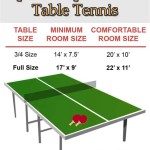Essential Aspects of Raised Vegetable Bed Design Ideas
Transforming your backyard into a thriving vegetable garden is an incredibly rewarding endeavor. Raised vegetable beds offer a multitude of benefits, including improved drainage, better soil quality, and easier access to your plants. Whether you're a seasoned gardener or just starting out, carefully considering the design of your raised beds is paramount to their success.
Bed Size and Shape: The most suitable size and shape of your raised beds will depend on the space available and the plants you intend to grow. Wider beds facilitate the planting of multiple rows, while narrower beds allow for easier access. As for shape, rectangular and square beds are classic choices, but L-shaped or U-shaped beds can optimize space utilization.
Materials Selection: The choice of materials for your raised beds largely hinges on durability, cost, and aesthetics. Cedar, redwood, and cypress are naturally rot-resistant woods that provide longevity. Pressure-treated lumber offers an affordable option, but it may contain chemicals that can leach into the soil. Concrete blocks, stones, and bricks provide a sturdy and visually appealing alternative.
Height and Depth: The ideal height and depth of your raised beds should match your gardening style and plant needs. Higher beds promote drainage and reduce back strain, while deeper beds accommodate plants with extensive root systems. A height of 12-18 inches and a depth of 12-18 inches are generally recommended for most vegetables.
Drainage: Ensuring adequate drainage is crucial for healthy plant growth. Incorporate drainage holes in the bottom of your raised beds or use a gravel base to facilitate excess water runoff. Avoid positioning beds in areas with poor natural drainage, as this can lead to waterlogging and root rot.
Accessibility: Accessibility to your raised beds should be a primary consideration. Ensure there is ample space around the beds for comfortable movement and maintenance tasks. Consider incorporating paths or stepping stones for easy access to all parts of your garden.
By meticulously planning the design of your raised vegetable beds, you can create an environment conducive to thriving vegetables. Remember to factor in the size, shape, materials, height, depth, drainage, and accessibility factors discussed above. With a well-designed setup, you'll enjoy a rewarding and bountiful harvest season after season.

Raised Bed Garden Design Knoll Landscape
:max_bytes(150000):strip_icc()/September-Garden-4-27714c582b0d4ceaad95c9c24aaac9d9-25fe181085014f4381c4323f8ff30f3f.jpg?strip=all)
31 Easy And Inexpensive Diy Raised Garden Bed Ideas
Vegetable Garden Layout Basics Gardening Forum

Vegetable Garden Layout 7 Best Design Secrets A Piece Of Rainbow

28 Best Diy Raised Bed Garden Ideas Designs Backyard Vegetable Gardens Design Small

4x8 Raised Bed Vegetable Garden Layout Ideas

10 Raised Bed Garden Ideas The Family Handyman
:strip_icc()/BHG114133-0be7f169b4bb41649b474dc6baa8316f.jpg?strip=all)
The Benefits Of Raised Vegetable Gardens

Raised Planter Boxes Front Yard Photos Ideas Vegetable Garden Planning Layout Small

10 Raised Bed Garden Ideas The Family Handyman








